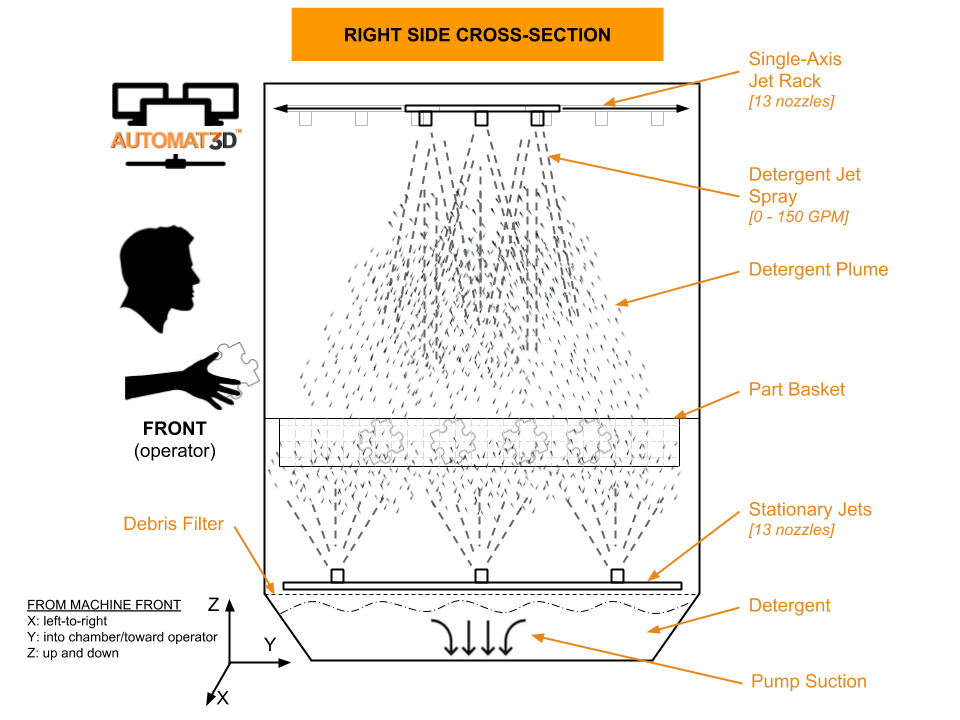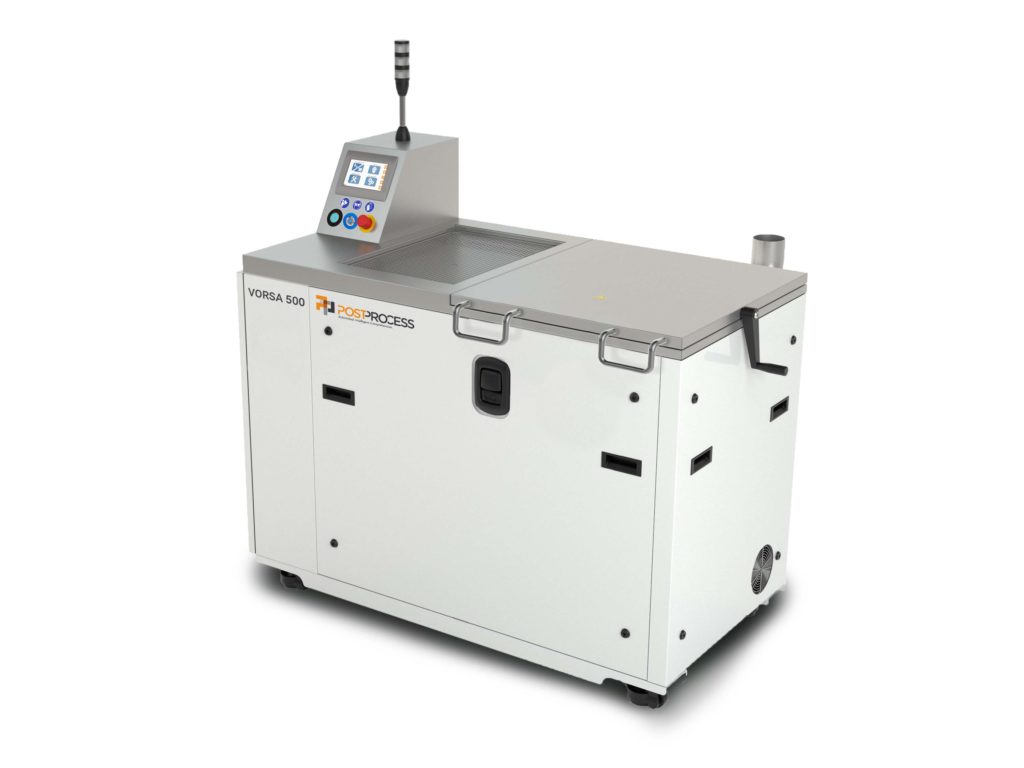PostProcess Technologies has released its latest in its line for automated support removal for fused deposition modeling (FDM) parts. The machine is called the VORSA 500 and the company suggests that it can cut support removal times in half.
The VORSA 500 relies on AUTOMAT3D software and Volumetric Velocity Dispersion (VVD) technology from PostProcess to automatically eliminate support structures on FDM parts. With VVD, the system sprays a pre-mixed detergent onto a part from multiple directions within a robust 16” L x 16” W x 14.5” H (41 cm x 41 cm x 37 cm) chamber.

A diagram of how a PostProcess VVD machine operates. Image courtesy of PostProcess Technologies.
Meanwhile, with user set parameters for predetermined agitation, AUTOMAT3D monitors the job, reacting to the process to ensure components are finished properly. All of this is meant to result in uniform parts, with the spray system also resulting in faster drying times compared to vat saturation counterparts.
“The addition of the VORSA 500 to our portfolio demonstrates our continued market leadership in the additive manufacturing post-print space and provides the industry with the fastest FDM support removal solutions,” said Rich Caplow, PostProcess Vice President, Product. “The VORSA 500 delivers on our promise to offer customers higher throughput with an automated and comprehensive FDM support removal solution.”
From what I gather, the primary difference between the VORSA 500 and the other support removal systems offered by PostProcess (the BASE and DECI) is the work envelope, which is smaller than that of the BASE (40” L x 27.5” W x 26” H/102 cm x 70 cm x 66 cm) and the DECI (19” L x 27.5” W x 26” H/48 cm x 70 cm x 66 cm). In turn, this suggests a machine that can be used for smaller jobs and workshops. PostProcess will discuss the machine in greater depth on February 3rd, with registration available here.

The VORSA 500 support removal system. Image courtesy of PostProcess Technologies.
PostProcess is one of just a handful of companies, like DyeMansion and Additive Manufacturing Technologies, working to automate post-processing of polymer 3D printed parts. While the sector is small, it’s set to become huge, as discussed in the industry’s first report on automation, “Automation, Additive Manufacturing and the Factory of the Future,” from SmarTech Analysis. That’s because post-processing represents at least 30 percent of labor costs associated with 3D printing. This and more will be discussed in the Automation, Rapid Manufacturing and Software vertical at the 2022 Additive Manufacturing Strategies event from March 1-3.
Subscribe to Our Email Newsletter
Stay up-to-date on all the latest news from the 3D printing industry and receive information and offers from third party vendors.
You May Also Like
New Report: Semiconductor Industry to See $1.4B in 3D Printing Revenues by 2032
“The semiconductor sector has become the most strategically significant area of global industry.” Truer words are hard to come by when it comes to the modern world, and they are...
Will Photonic-Crystal Lasers Revolutionize 3D Printing?
Powder bed fusion (PBF) for metals and polymers predominantly utilizes lasers as the primary heat source. Some directed energy deposition (DED) technologies also employ lasers, while various vat polymerization methods...
3D Printing Unpeeled: Orbex Investment, IndoMIM and HP, Ultrasonic Waves
INDO-MIM has bought three HP Metal Jet S100 printers, operating two in India and one in Texas. This is a win for HP because the company has deep experience in...
3D Printing Webinar and Event Roundup: April 21, 2024
It’s another busy week of webinars and events, starting with Hannover Messe in Germany and continuing with Metalcasting Congress, Chinaplas, TechBlick’s Innovation Festival, and more. Stratasys continues its advanced training...































